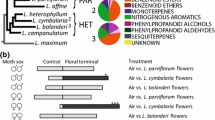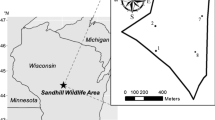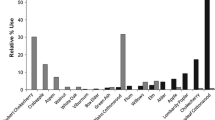Abstract
Although ecological specialists exploit a relatively limited resource base, it is unclear whether specialization limits local population density. Here, we focus on the relationship between diet specialization and local population density of a phytophagous insect, the diamondback moth, Plutella xylostella L. (Lepidoptera: Plutellidae). We compared key life history traits and food plant use among five pairs of high- and low-density populations from widely separate geographical areas. Moths from populations that persist at high densities were more generalized in food plant use than moths from low-density populations. In particular, the oviposition preference and larval performance of moths from some high-density populations were less variable across a suite of food plants, suggesting that moths from high- density populations had a broader diet. In addition, low- density populations were less similar to each other, exhibiting opposing preferences for particular plant species. Hence diet breadth may explain some of the persistent differences in the population density of diamondback moths in the field, consistent with the idea that ecological specialization may be generally associated with population density.
Similar content being viewed by others
Author information
Authors and Affiliations
Additional information
Received: 19 December 1996 / Accepted: 2 May 1997
Rights and permissions
About this article
Cite this article
Bigger, D., Fox, L. High-density populations of diamondback moth have broader host-plant diets. Oecologia 112, 179–186 (1997). https://doi.org/10.1007/s004420050298
Issue Date:
DOI: https://doi.org/10.1007/s004420050298




